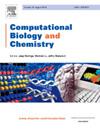CPI-GGS: A deep learning model for predicting compound-protein interaction based on graphs and sequences
IF 2.6
4区 生物学
Q2 BIOLOGY
引用次数: 0
Abstract
Background
Compound-protein interaction (CPI) is essential to drug discovery and design, where traditional methods are often costly and have low success rates. Recently, the integration of machine learning and deep learning in CPI research has shown potential to reduce costs and enhance discovery efficiency by improving protein target identification accuracy. Additionally, with an urgent need for novel therapies against complex diseases, CPI investigation could lead to the identification of effective new drugs. Since drug-target interactions involve complex biological processes, refined models are necessary for precise feature extraction and analysis. Nevertheless, current CPI prediction methods still face significant limitations: predictions lack sufficient accuracy, models require improved generalization ability, and further validation across diverse datasets remains essential.
Results
To address some issues at the current stage, this paper proposes a combined deep learning method, CPI-GGS, for predicting and analyzing compound-protein interactions. The source code is available on GitHub at https://github.com/xingjie321/CPI-GGS.
Conclusions
The experimental results demonstrate improved accuracy in predicting compound-protein interactions and enhance the understanding of how compounds and proteins interact, providing a valuable new tool for drug discovery and development.
CPI-GGS:基于图和序列预测化合物-蛋白质相互作用的深度学习模型。
背景:化合物-蛋白质相互作用(CPI)对药物发现和设计至关重要,传统方法往往成本高昂且成功率低。最近,机器学习和深度学习在CPI研究中的结合显示出通过提高蛋白质靶点识别精度来降低成本和提高发现效率的潜力。此外,由于迫切需要针对复杂疾病的新疗法,CPI研究可以导致有效的新药的鉴定。由于药物-靶标相互作用涉及复杂的生物过程,精确的特征提取和分析需要精细的模型。然而,目前的CPI预测方法仍然面临着明显的局限性:预测缺乏足够的准确性,模型需要提高泛化能力,并且在不同数据集上进一步验证仍然是必要的。结果:针对现阶段存在的一些问题,本文提出了一种用于预测和分析化合物-蛋白质相互作用的组合深度学习方法CPI-GGS。实验结果表明,预测化合物和蛋白质相互作用的准确性得到了提高,并增强了对化合物和蛋白质如何相互作用的理解,为药物发现和开发提供了一个有价值的新工具。
本文章由计算机程序翻译,如有差异,请以英文原文为准。
求助全文
约1分钟内获得全文
求助全文
来源期刊

Computational Biology and Chemistry
生物-计算机:跨学科应用
CiteScore
6.10
自引率
3.20%
发文量
142
审稿时长
24 days
期刊介绍:
Computational Biology and Chemistry publishes original research papers and review articles in all areas of computational life sciences. High quality research contributions with a major computational component in the areas of nucleic acid and protein sequence research, molecular evolution, molecular genetics (functional genomics and proteomics), theory and practice of either biology-specific or chemical-biology-specific modeling, and structural biology of nucleic acids and proteins are particularly welcome. Exceptionally high quality research work in bioinformatics, systems biology, ecology, computational pharmacology, metabolism, biomedical engineering, epidemiology, and statistical genetics will also be considered.
Given their inherent uncertainty, protein modeling and molecular docking studies should be thoroughly validated. In the absence of experimental results for validation, the use of molecular dynamics simulations along with detailed free energy calculations, for example, should be used as complementary techniques to support the major conclusions. Submissions of premature modeling exercises without additional biological insights will not be considered.
Review articles will generally be commissioned by the editors and should not be submitted to the journal without explicit invitation. However prospective authors are welcome to send a brief (one to three pages) synopsis, which will be evaluated by the editors.
 求助内容:
求助内容: 应助结果提醒方式:
应助结果提醒方式:


